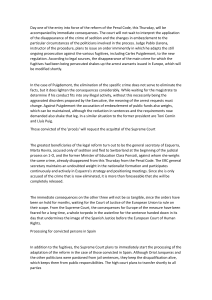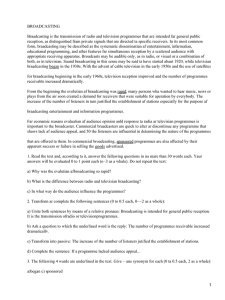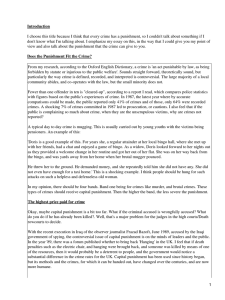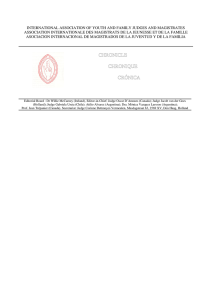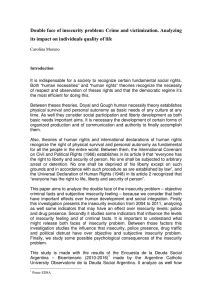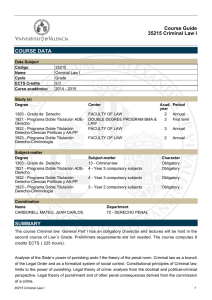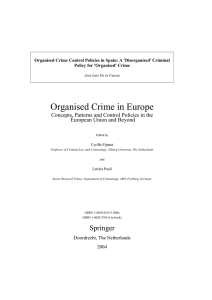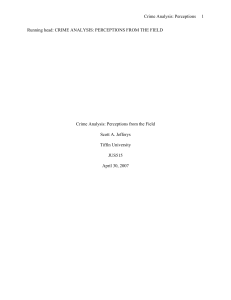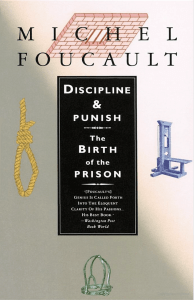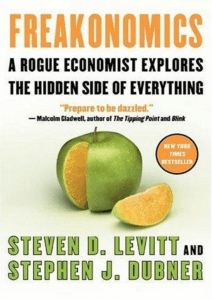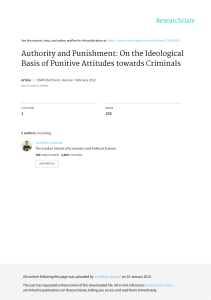The aftermath of France`s last moral panic and its sociology*
Anuncio
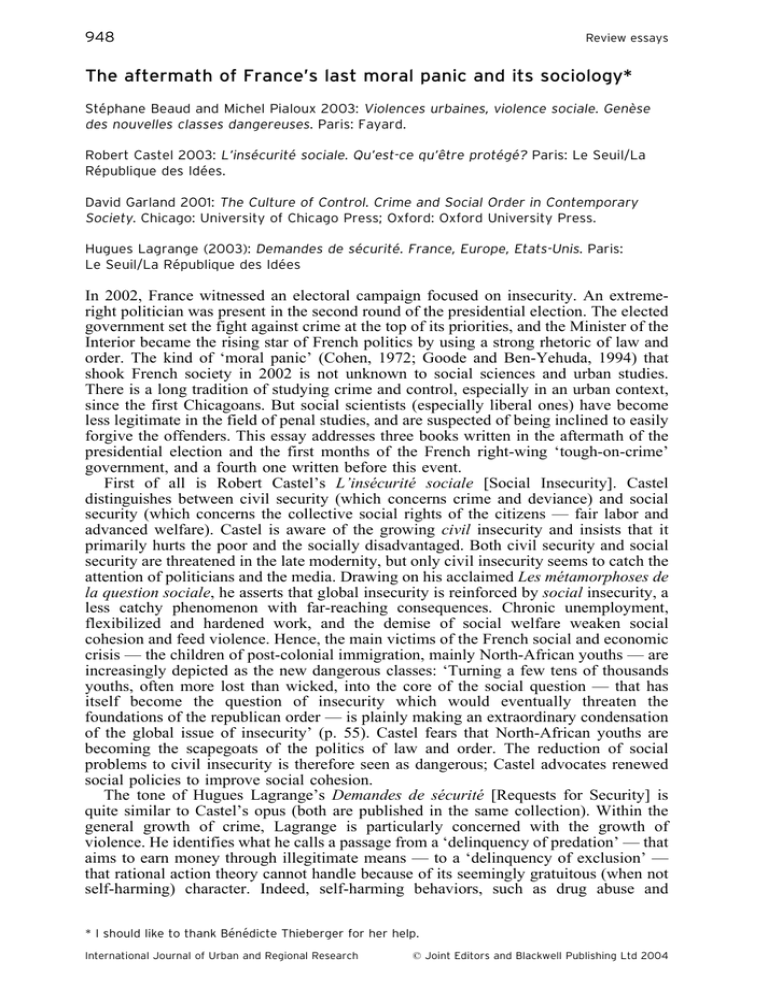
948 Review essays The aftermath of France's last moral panic and its sociology* Âphane Beaud and Michel Pialoux 2003: Violences urbaines, violence sociale. Gene Áse Ste des nouvelles classes dangereuses. Paris: Fayard. Âcurite  sociale. Qu'est-ce qu'e Ãtre prote Âge Â? Paris: Le Seuil/La Robert Castel 2003: L'inse Âpublique des Ide Âes. Re David Garland 2001: The Culture of Control. Crime and Social Order in Contemporary Society. Chicago: University of Chicago Press; Oxford: Oxford University Press. Âcurite Â. France, Europe, Etats-Unis. Paris: Hugues Lagrange (2003): Demandes de se Âpublique des Ide Âes Le Seuil/La Re In 2002, France witnessed an electoral campaign focused on insecurity. An extremeright politician was present in the second round of the presidential election. The elected government set the fight against crime at the top of its priorities, and the Minister of the Interior became the rising star of French politics by using a strong rhetoric of law and order. The kind of `moral panic' (Cohen, 1972; Goode and Ben-Yehuda, 1994) that shook French society in 2002 is not unknown to social sciences and urban studies. There is a long tradition of studying crime and control, especially in an urban context, since the first Chicagoans. But social scientists (especially liberal ones) have become less legitimate in the field of penal studies, and are suspected of being inclined to easily forgive the offenders. This essay addresses three books written in the aftermath of the presidential election and the first months of the French right-wing `tough-on-crime' government, and a fourth one written before this event. First of all is Robert Castel's L'inseÂcurite sociale [Social Insecurity]. Castel distinguishes between civil security (which concerns crime and deviance) and social security (which concerns the collective social rights of the citizens Ð fair labor and advanced welfare). Castel is aware of the growing civil insecurity and insists that it primarily hurts the poor and the socially disadvantaged. Both civil security and social security are threatened in the late modernity, but only civil insecurity seems to catch the attention of politicians and the media. Drawing on his acclaimed Les meÂtamorphoses de la question sociale, he asserts that global insecurity is reinforced by social insecurity, a less catchy phenomenon with far-reaching consequences. Chronic unemployment, flexibilized and hardened work, and the demise of social welfare weaken social cohesion and feed violence. Hence, the main victims of the French social and economic crisis Ð the children of post-colonial immigration, mainly North-African youths Ð are increasingly depicted as the new dangerous classes: `Turning a few tens of thousands youths, often more lost than wicked, into the core of the social question Ð that has itself become the question of insecurity which would eventually threaten the foundations of the republican order Ð is plainly making an extraordinary condensation of the global issue of insecurity' (p. 55). Castel fears that North-African youths are becoming the scapegoats of the politics of law and order. The reduction of social problems to civil insecurity is therefore seen as dangerous; Castel advocates renewed social policies to improve social cohesion. The tone of Hugues Lagrange's Demandes de seÂcurite [Requests for Security] is quite similar to Castel's opus (both are published in the same collection). Within the general growth of crime, Lagrange is particularly concerned with the growth of violence. He identifies what he calls a passage from a `delinquency of predation' Ð that aims to earn money through illegitimate means Ð to a `delinquency of exclusion' Ð that rational action theory cannot handle because of its seemingly gratuitous (when not self-harming) character. Indeed, self-harming behaviors, such as drug abuse and Âne Âdicte Thieberger for her help. * I should like to thank Be International Journal of Urban and Regional Research ß Joint Editors and Blackwell Publishing Ltd 2004 Review essays 949 suicide, are interpreted by Lagrange as consequences of loneliness, desocialization, and social exclusion. Drawing on tables of statistical data, he tries to link the growth of violence to that of social clustering. Lagrange feels uncomfortable with the US solution to the rise of crime, namely mass imprisonment. He warns against the development of `insurance-based' policies. `Insurance-based' policies rely on the technological prevention of the risk against offences. They assume crime as a normal though malign social fact, regardless of the social conditions of its production. According to Lagrange, the horizon of penal policies should not be restricted to incapacitation and situational prevention. On the contrary, North-African youths Ð assumed to be mainly responsible for insecurity in France Ð should benefit from social policies and political empowerment instead of being continually targeted by repressive policies. Castel's L'inseÂcurite sociale is not a research book, neither is Lagrange's Demandes de seÂcuriteÂ. Both are 100-page works intended to inform enlightened citizens. This is not the case with SteÂphane Beaud and Michel Pialoux's Violences urbaines, violences sociales [Urban Violence, Social Violence]. This 400-page opus is based on an in-depth ethnographic work conducted for 10 years in the car factories of Sochaux-MontbeÂliard (eastern France). In that location, an urban riot took place in 2000 with Black and North-African youths opposing the police. This event took place in an economic context of growth and relative full employment. Beaud and Pialoux intend to understand the social genesis of the riot, and the apparent contradiction between the riot and the economic context. To do this, they emphasize the hardness of working-class life in the post-industrial society: chronic unemployment for the poorly qualified, harmful and health-jeopardizing conditions of work, and the firing of the physically weakened and those who suffer `biographical breakdowns'. A short period of economic growth (1998± 2001) allowed the automobile factories and their subcontractors to hire extensively among unemployed Black and North-African youths. Almost all of them were hired for temporary work, and virtually none were hired with a full-time open-ended contract. The youths were strictly kept away from contentious trade unions; elsewhere they would have been fired and removed from the hiring lists of temping agencies. The management tried its best to strengthen latent conflicts between the youths and old workers, the temporary workers and those receiving open-ended contracts, and between men and women. In short, the `full-precarious employment' of the economic boom was not a basis for social cohesion. Many of those with a high-school diploma still become blue-collar workers and there is an extreme shortage of long-term secure jobs. All this, according to Beaud and Pialoux, helps us to understand the rudeness and the aggressive behavior of the `new dangerous classes', namely the children of post-colonial immigration (mainly Black and North-African young males). The socio-economic context may give a few hints on why such a riot occurred in July 2000. There is a strong methodological gap between Demandes de seÂcurite and Violences urbaines, violence sociale. The former relies upon quantitative data, mainly tables of data concerning rates of offenses: it is not state-of-the-art research Ð his data illustrate the main argument. When it comes to the problem of the empirical and theoretical link between social conditions (e.g. poverty and social inequality) and delinquency, it fails to support any strong rationale. By contrast, the latter publication draws on intensive qualitative research. Beaud and Pialoux worked for 10 years as sociologists of the working class, and their piece of work reflects this specialization. Three-quarters of their book could be published with another title since it has few links with the riot. The description of labor in the industrial world is not precisely linked with urban violence: the implicit rationale of the book is that if you live as a temporary blue-collar worker of Sochaux-MontbeÂliard, you will probably conclude that rioting is the only thing worth while. Here lies the deep interest raised by Violences urbaines, violence sociale. Still, the book conveys methodological drawbacks. Their individual cases seem to come directly from their precedent research and the `new dangerous classes' are quasi-absent from the interviewed people. Each chapter focuses almost entirely on one individual over-developed case, always depicted as `exemplary', `ideal-typical' or `borderline'. Moreover, the research is very loosely connected to theoretical concerns. International Journal of Urban and Regional Research ß Joint Editors and Blackwell Publishing Ltd 2004 950 Review essays The bibliography is poor and the book, though rhetorically Bourdieusian, is implicitly Mertonian: frustration, anger, and the will to achieve a higher social status seem to be the main thrust of rioters. In spite of these shortcomings, and so long as we can trust their methodology, Beaud and Pialoux provide a convincing picture of the real world of disadvantaged social groups. Where Castel only refers to social inequality, and Lagrange's tables hardly support any hypotheses concerning social background and delinquency, Beaud and Pialoux raise true-to-life empirical clues that support a rationale arguing that `the new dangerous classes' need more social policies rather than increased policing. Surprisingly, the three books Ð all written by seasoned sociologists Ð convey acts of contrition for being books about the sociology of crime and delinquency. They all start by apologizing that they are `only' social scientists in a field (penal studies) dominated by repressive-minded security experts. Has a left-wing French Prime Minister not declared that, concerning delinquency, we should forget about `sociological excuses' and focus on `individual responsibility'? David Garland's The Culture of Control seeks to explain why the sociological discourse on crime and crime control, once so influential, has become a matter of mockery in the common sense. Garland identifies three paradigms in penal studies and practices. The first is Hobbesian: it corresponds to the rise of the penal state up to the Industrial Revolution. According to Hobbes, unless an almighty state imposes order on disorder-ridden men, no society is possible. Negative Hobbesian anthropology calls for harsh punishment to set fear in the heart of man. The second paradigm is penal welfarism. According to Garland, `If it was a Hobbesian problem of order that first prompted the development of the criminal justice state in modern early Europe, one might say it was a Marxist problem of order Ð the social and political instability caused by class antagonism and unregulated market expansion Ð that first motivated penal welfarism' (p. 45). The ideology of penal welfarism stems from the Enlightenment: man is no longer a wolf for his fellow, but indeed is capable of rehabilitation. The criminal is no moral monster, and with care he can recover his full citizenship. Typically, instead of inflicting harsh punishment such as torture and spectacular death, the penal welfarist legal system considered the criminal as a victim of the overall social conditions, and looked for a kind of treatment. Penal welfarism grew with the rise of the welfare state and in many ways is still seen as the traditional left-wing penal ideology. But it used to be much more prevalent, and has been outdone by the third paradigm. The `scientific' revolution occurred 20 years ago, with the crisis of the welfare state. There was a massive critique of the `big government' and the bureaucracy by neoliberals. The rise of crime and delinquency (lasting since the 1960s and the affluent society) seemed to prove that `nothing works' against crime. Garland makes an analogy with the stock-market at this point: in a few years, penal welfarism was not believed in any more by policy-makers. This paradigmatic revolution was more successful in the United States and in the United Kingdom, where Ronald Reagan and Margaret Thatcher led neoliberal and neoconservative policies. As Garland puts it: `If the watchwords of post-war social democracy had been economic control and social liberation, the new politics of the 1980s puts in place a quite different framework of economic freedom and social control' (p. 100). Now, the penal system is often seen as too weak and too lax with criminals; the focus tends to switch from the causes of crime to its consequences. Crime is increasingly seen as a routine activity, the product of a rational choice whose cost is punishment. Hence, punishment and repressive strategies become the main features of the new penal policies. Whereas punishment is still a matter of the state, an increasing part of crime control is now privatized. This means a greater inequality in the access to security, the epitome being the gated communities. The new culture of crime control is characterized by English Premier John Major's apothegm: `To condemn more and to understand less'. It is materialized in the rise of imprisonment, particularly in the United States: with two million inmates and an ever-expanding prison population, the American rate of incarceration might become in the future closer to that of the Soviet Republic. International Journal of Urban and Regional Research ß Joint Editors and Blackwell Publishing Ltd 2004 951 Review essays But as some institutions of penal-welfarism still endure, Garland asserts that the major revolution occurred in people's minds, in the cognitive ways people handle crime and crime control. For that matter, the traditional sociological discourse Ð e.g. explaining crime in relation to disadvantaged social backgrounds Ð has been dishonored and dismissed as `ideological'. It is quite ironic to remember that the first critique of penal-welfarism came from the Left. Foucault (1975) is the leading figure of the `revisionist'1 history of social control. Discipline and Punish analyzes the rise of penal-welfarism as the rationalization of the control in modern society Ð therefore identified as the `disciplinary society'. Instead of seeing the softening of punishment as a feature of a `humanized' society, he stresses the intensification of control. According to him, penal-welfarism makes the target of control switch from the (tortured) body to the (alienated) soul. Penal-welfarism suffered ferocious critique from the revisionists (see Rothman, 1971; Ignatieff, 1978; and Melossi and Pavarini, 1979). Among them was Robert Castel, at this time a specialist of psychoanalysis and psychiatry (Castel, 1971). Times are changing. Facing the rise of punitive ideologies and practices in contemporary society, and the persistence of class-based and ethnic-based discrimination in penal systems, Castel, Lagrange, Beaud and Pialoux all now urge a breakdown with `the new culture of control', if not a revival of penal welfarism. When Castel argues that social insecurity (e.g. unfair labor and the demise of welfare) is as dangerous a component as civil insecurity of the `global' insecurity, he favors strong social policies to downsize crime and delinquency. Lagrange rejects that punitive trend and mass imprisonment. His analysis of `insurance-based' policies is useful to understand Ð and to argue against Ð the tendency to see crime as a risk against which one has to protect himself, instead of looking for the social conditions of the production of deviance. Beaud and Pialoux show that social inequality, the demise of classconsciousness and the precariousness of work in an industrial zone are helpful to understand the rebellious violence of North-African youths. Crime and delinquency are therefore not just related to the moral wrongness of individuals. All these conclusions may seem quite trivial, but are of the highest relevance. In spite of their different views, they all argue in favor of a renewal of the sociological eye concerning crime and deviance. Above all, Garland's impressive book may become the rallying point of that renewal. Franc Ëois Bonnet, University of Milan-Bicocca Ð CEVIPOF, Sciences-Po, Paris Castel, R. (1971) L'Ordre psychiatrique. L'aÃge d'or de l'alieÂnisme. Minuit, Paris. Cohen, S. (1972) Folk devils and moral panics: the creation of the mods and rockers. MacGibbon & Kee, London. Foucault, M. (1975) Surveiller et punir. Naissance de la prison. Gallimard, Paris. (English translation (1979) Discipline and punish. The birth of the prison. Vintage, New York.) Goode, E. and N. Ben-Yehuda (1994) Moral panics: culture, politics and social construction. Annual Review of Sociology 1 20, 149±71. Ignatieff, M. (1978) A just measure of pain. Macmillan, London. Melossi, D. and M. Pavarini (1979) Carcere e fabbrica. Alle origini del sistema penitenziario (XVI-XIX secolo). Il Mulino, Bologna. (English translation (1981) The prison and the factory. Origins of the penitentiary system. Macmillan, London.) Rothman, D.J. (1971) The discovery of the asylum. Social order and disorder in the new republic. Little Brown, Boston. In the field of penal studies, `revisionism' refers to the critique of penal welfarism. It obviously has no links with the denial of the Holocaust. International Journal of Urban and Regional Research ß Joint Editors and Blackwell Publishing Ltd 2004
